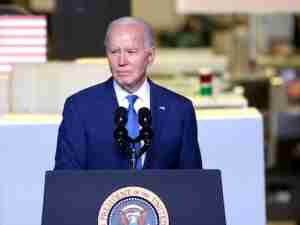Ample storage space for oil may limit price moves
By: Reuters | Jan 19 2016 at 06:20 AM
LONDON - There is more storage space for crude around the world than anticipated, which will help prevent further sharp falls in the price but also weigh against significant price rises, analysts and industry watchers say.
New storage tanks built in recent years, mostly in the United States and Asia, leave hundreds of millions of barrels of space to fill, confounding expectations that excess production could overflow tanks and drive prices further down.
The space also acts as a disincentive for countries to limit production, despite a record 3 billion barrels of oil and products already in storage in the developed world and Iran’s plans to boost exports after sanctions were lifted on Saturday.
But as the space is concentrated in national strategic storage and tanks that are further from trading hubs, it will become increasingly difficult for traders to make money by buying oil and placing it in storage. http://reut.rs/209R895
Oil prices have lost nearly 75 percent of their value in the past 18 months due to increased U.S. shale oil output and OPEC’s refusal to cede market share.
Benchmark Brent crude dipped below $28 a barrel on Monday, its lowest level since 2003, but recovered above $29 on Tuesday with traders saying Iran’s return to the market had been priced in.
The International Energy Agency said on Tuesday some 230 million barrels of new storage will be completed over the coming year - nearly half of it in strategic reserve sites in China.
A senior trading source identified 40 million barrels-worth of new commercial storage in China alone set to become operational over the coming year. Most is in Shandong province, a hub for so-called teapot refineries, many of which will be allowed to import oil for the first time this year.
There is also at least 100 million barrels of space left in U.S. tanks, alongside existing capacity in Asia and Europe, the IEA said.
The space still left in Europe tends to be in harder-to-reach sites away from the Amsterdam-Rotterdam-Antwerp (ARA) hub, facilities further inland or those such as salt caverns, which are rock-cut caverns in Scandinavia that draw little attention during normal times.
“There’s an awful lot of places that are built, but are not necessarily publicised…there’s quite a bit of space in some of those,” Andrew Wilson, who watches stocks and prices for the IEA, told Reuters.
CONTANGO
The space has confounded expectations storage capacity limits could be reached, which the IEA initially warned of more than a year ago. Oil and product stocks in the developed world are at a record, and global stocks are also likely at a record, according to Wilson, though precise global data is patchy.
Goldman Sachs said on Friday that free tank space, as well as strong demand from refineries, reduced the likelihood of an overspill that would drive the oil price down to its worst-case estimate of $20 a barrel.
“With more outlets including storage, excess production can be maintained on a longer time horizon before surpluses saturate markets and breach logistical and storage constraints,” Goldman Sachs said in the note, adding that if the limit is breached it could “create an outright collapse in commodity prices, which is the basis of our $20/bbl oil scenario.”
Instead, the bank foresaw a price of $40 per barrel for first half of 2016 for the benchmark U.S. West Texas Intermediate crude. 0#CL:
While analysts say storage capacity has kept prices from bottoming, it is also preventing the contango, or the gap between current and future prices, from deepening to the point that traders pile oil into more difficult-to-reach locations, or more expensive “floating” storage on crude oil tankers.
The lack of this gap is becoming a headline issue as the ideal locations come up against space constraints.
Stocks at Cushing, Oklahoma, the U.S. pricing hub that is a logistically ideal place to store oil, tanks are now around 70 percent full, according to U.S. Energy Information Administration data, a level considered near maximum to most in the oil industry.
Industry monitor Genscape showed Amsterdam-Rotterdam-Antwerp crude tanks, with some 53 million barrels of oil, nearly 60 percent full.
But the discount between current Brent prices and those six months forward stood at just $3.60 per barrel, around half of the contango from January last year. The gap between prompt WTI prices and six months forward was at $4.55 per barrel, compared with more than $8 reached in February last year.
“There is storage, but not necessarily where people want it,” said Alan Gelder, VP of refining, chemicals and oil markets with Wood Mackenzie.
There are currently 18 supertankers, and one behemoth ULCC, floating off Malaysia as storage. Roughly half the supertankers still have space to store oil, according to live shipping data on Eikon, though more than half of them were for fuel oil.
But nearly all of these were booked at least a year ago, amid deeper contango and cheaper freight costs, and Iran’s return to the market is expected to keep vessel rates high this year.
Traders said there is little chance any new floating storage would surface in the near term, taking out yet another potential outlet for oil demand.
“At the moment, you do it by necessity because you have no home for your oil rather than as a trading position,” the trader said, adding that “people won’t do it willingly” until contango deepens and freight costs ease.









